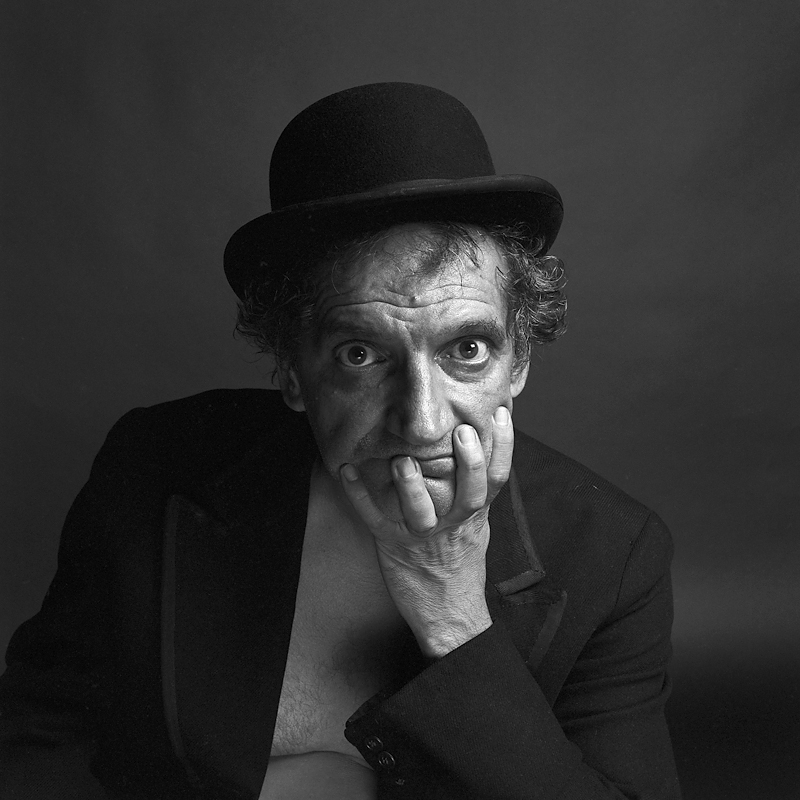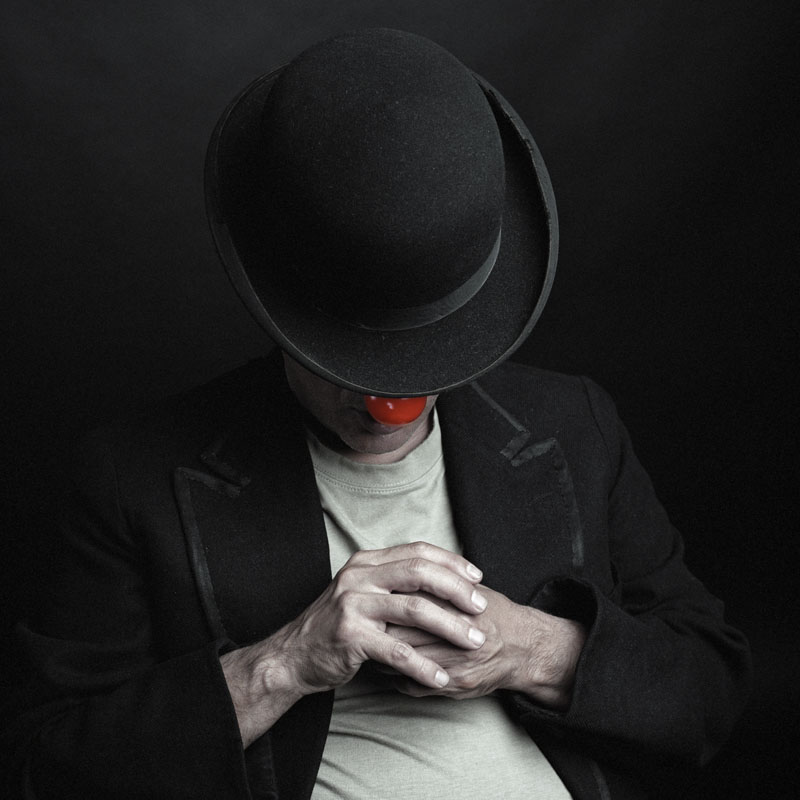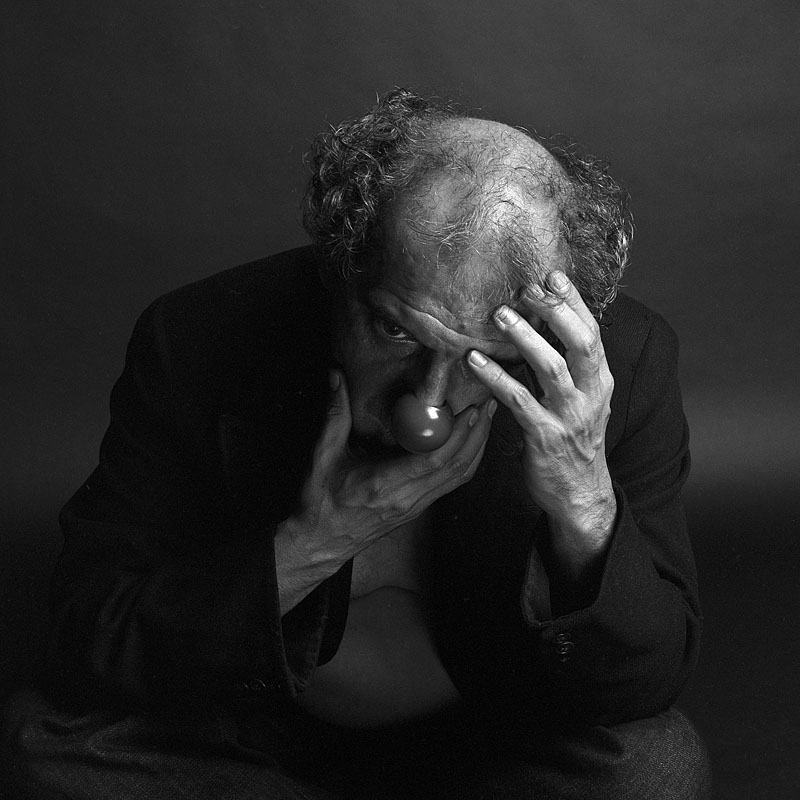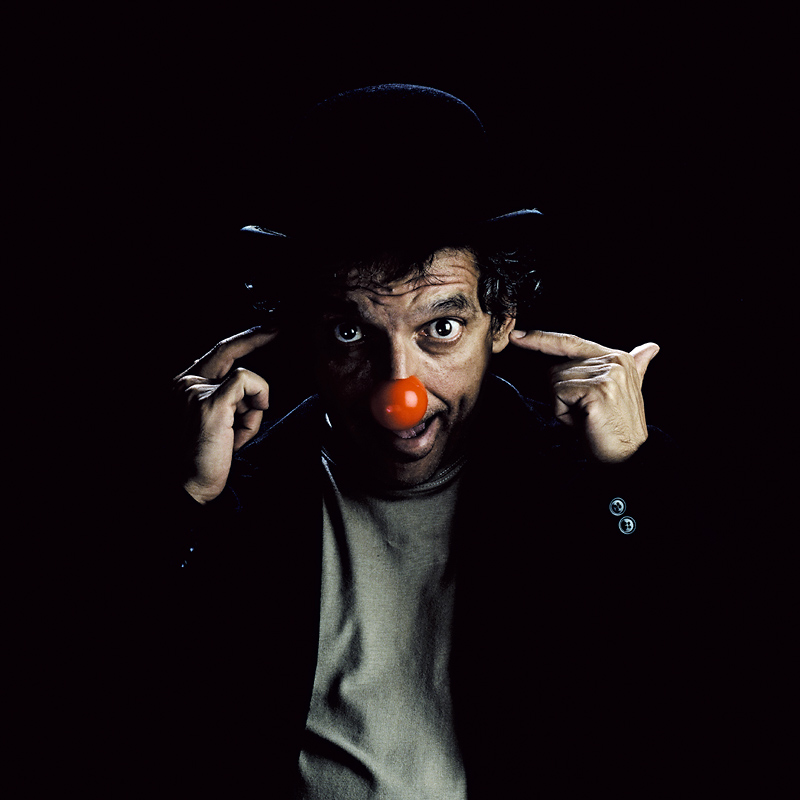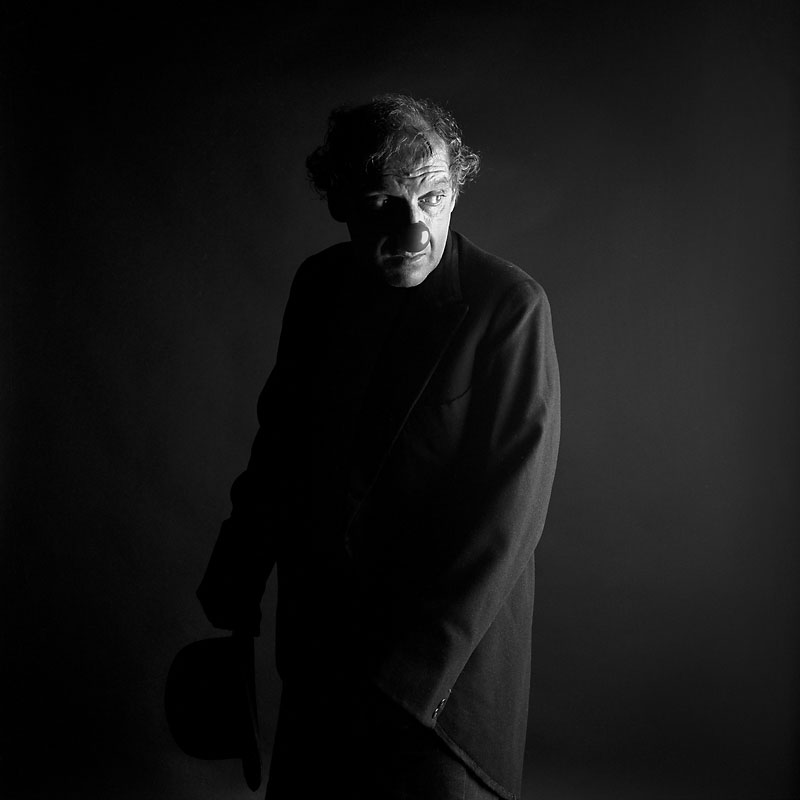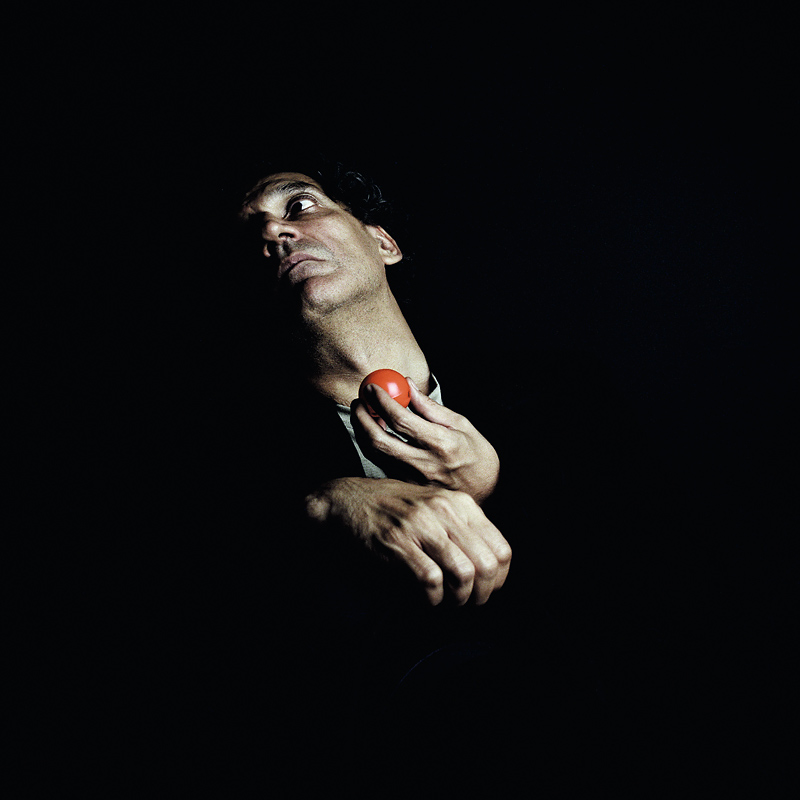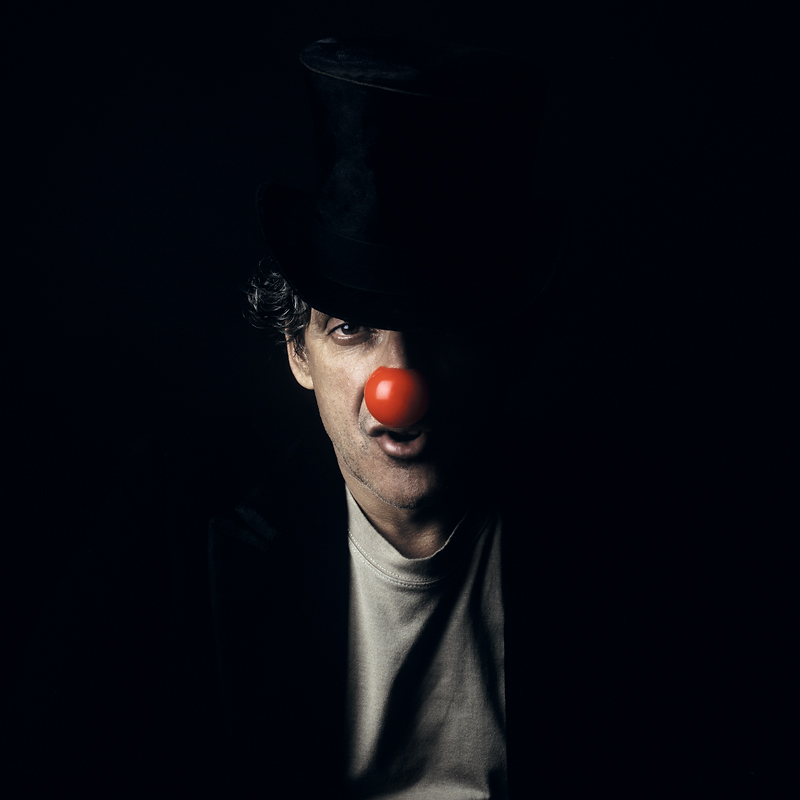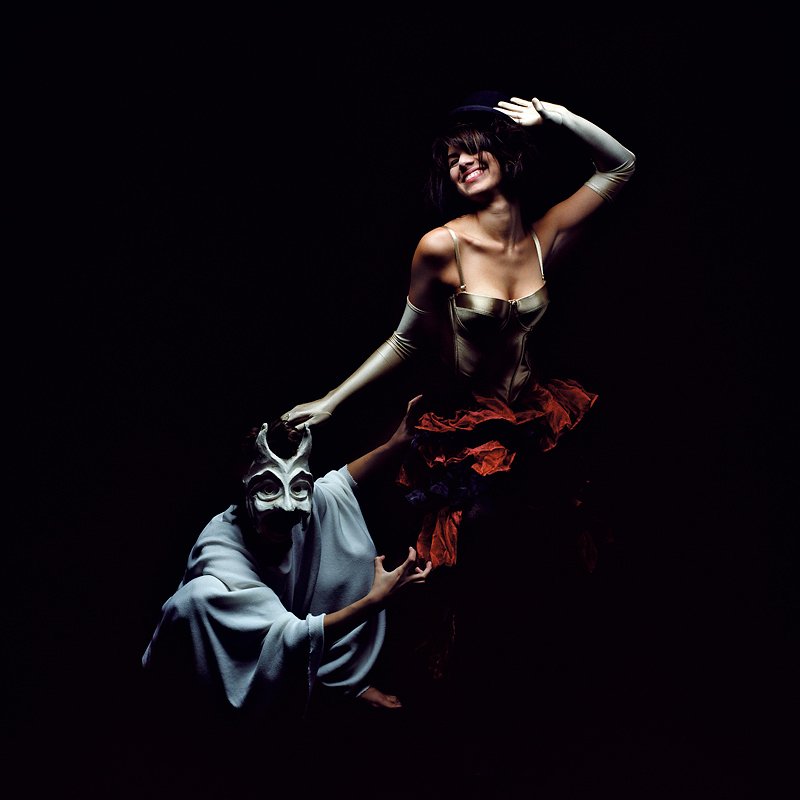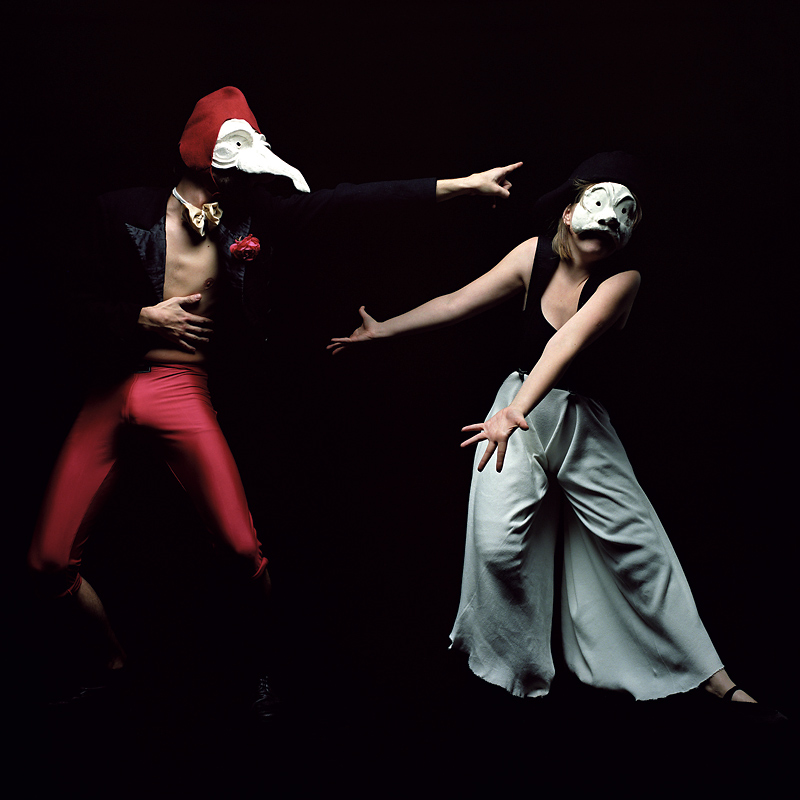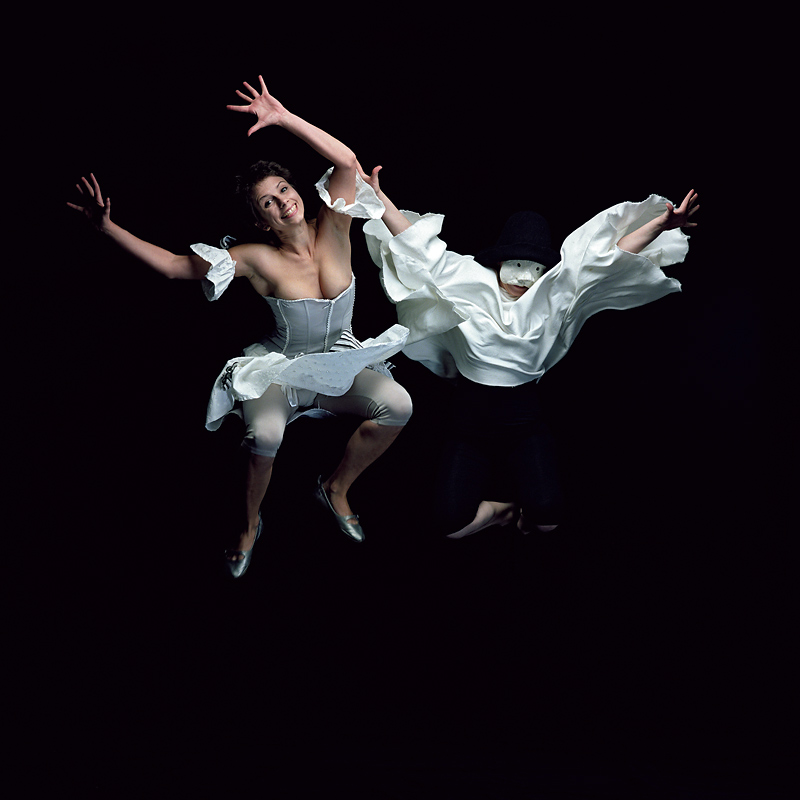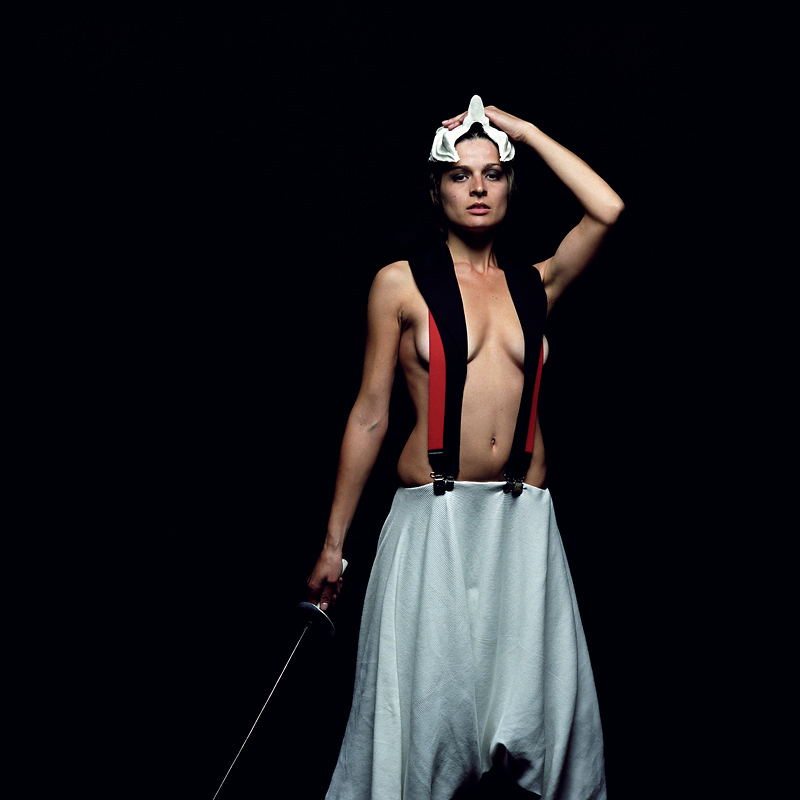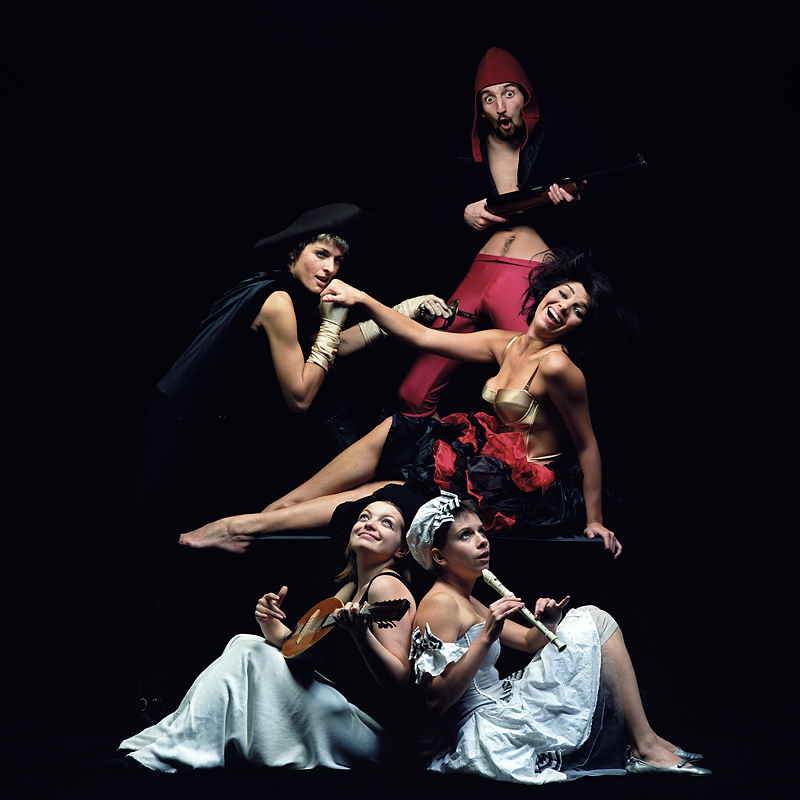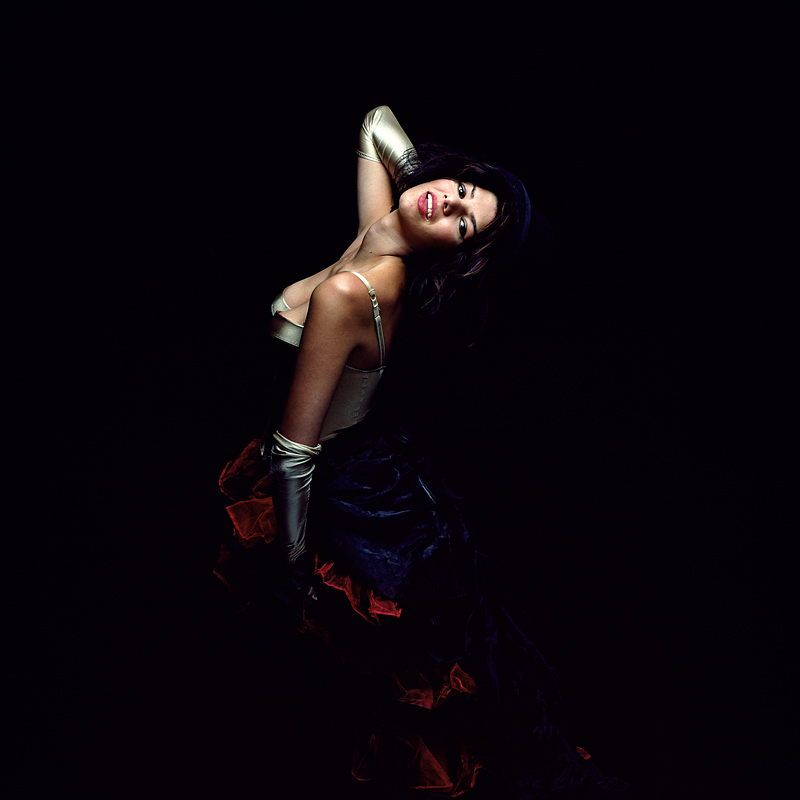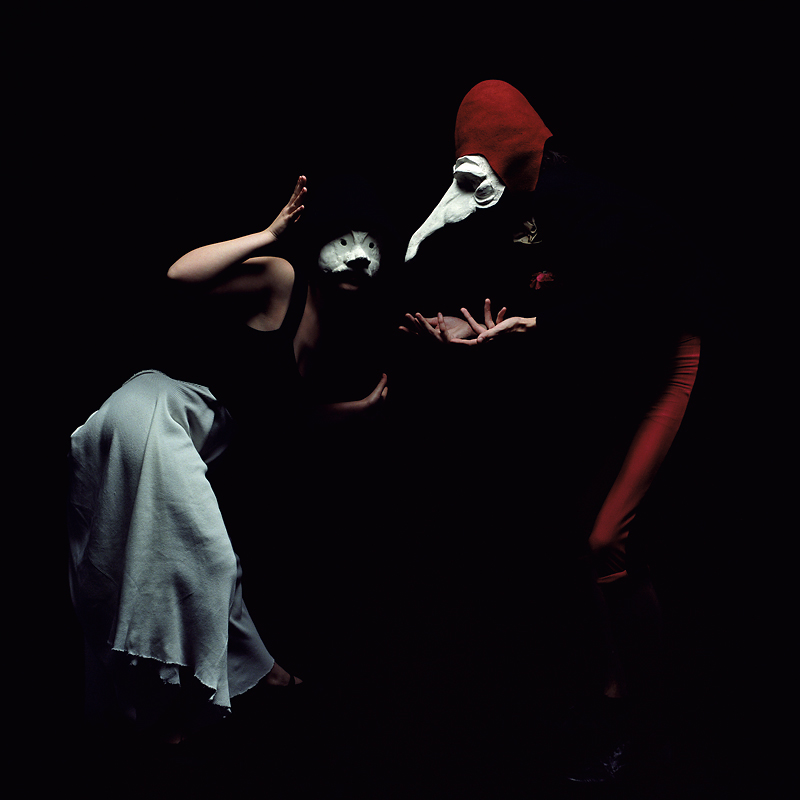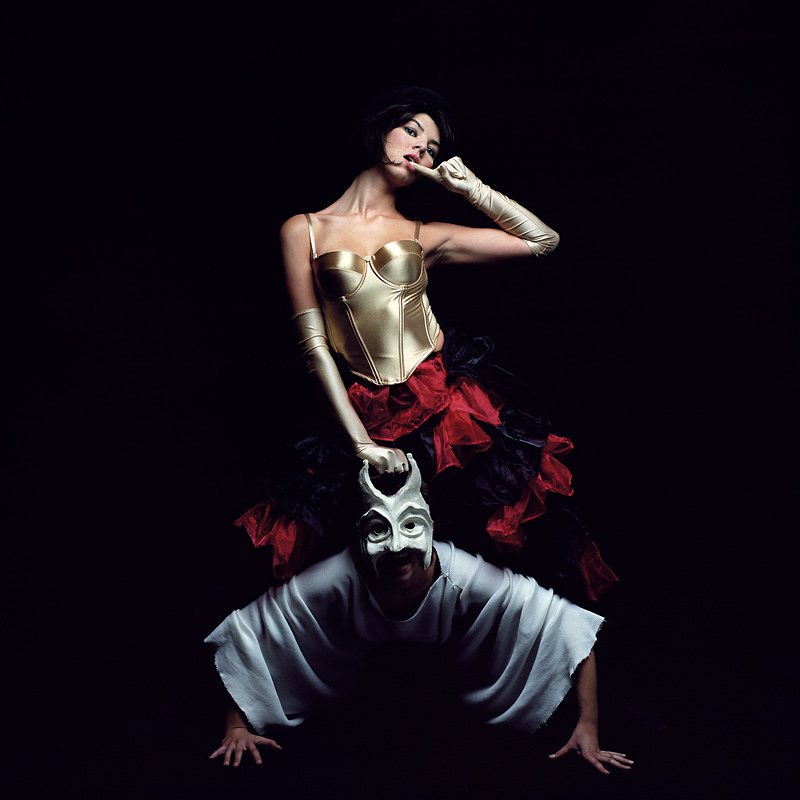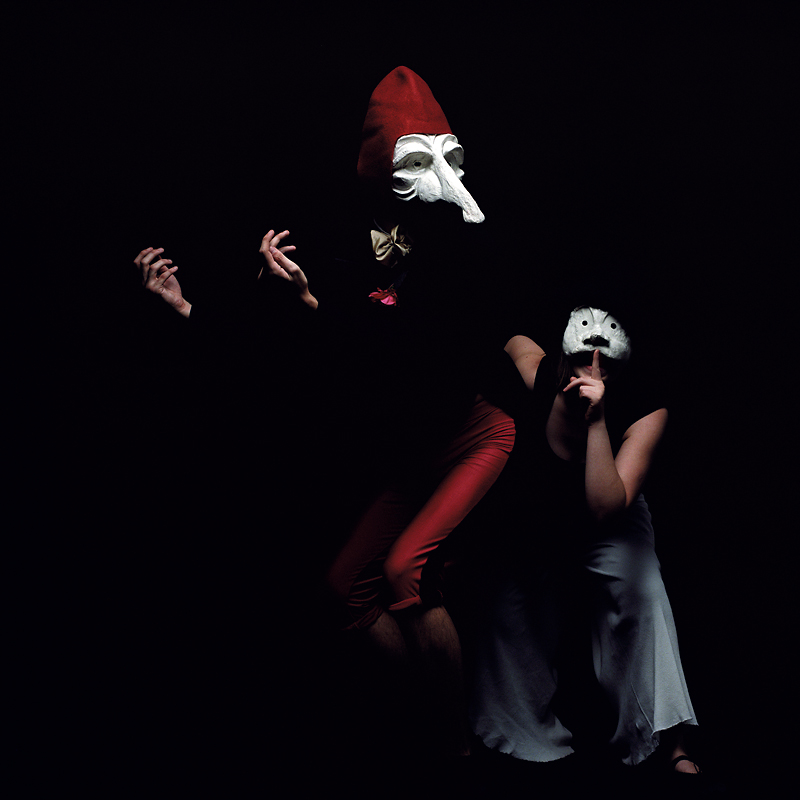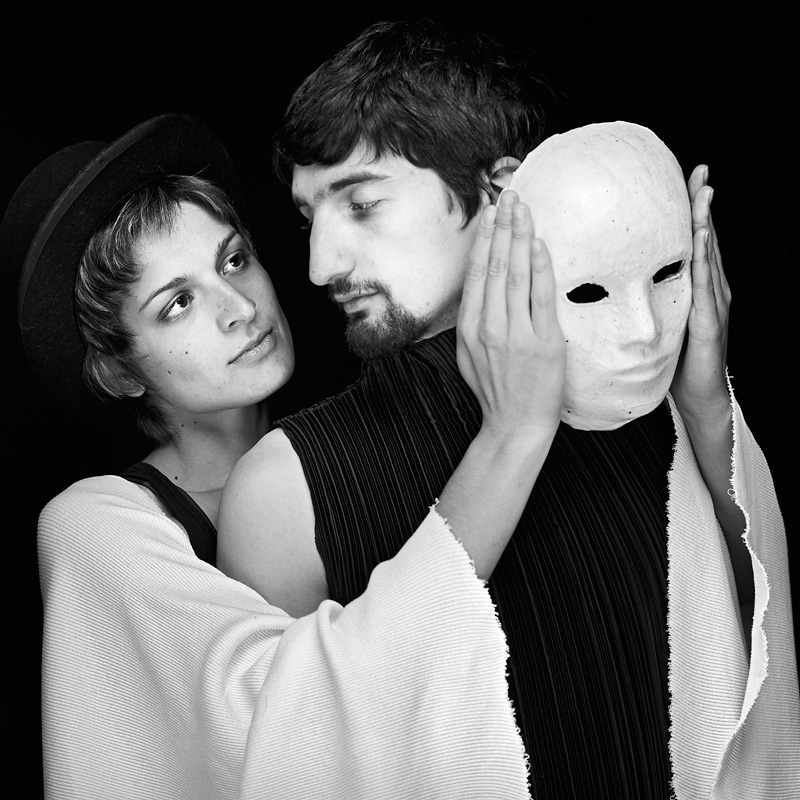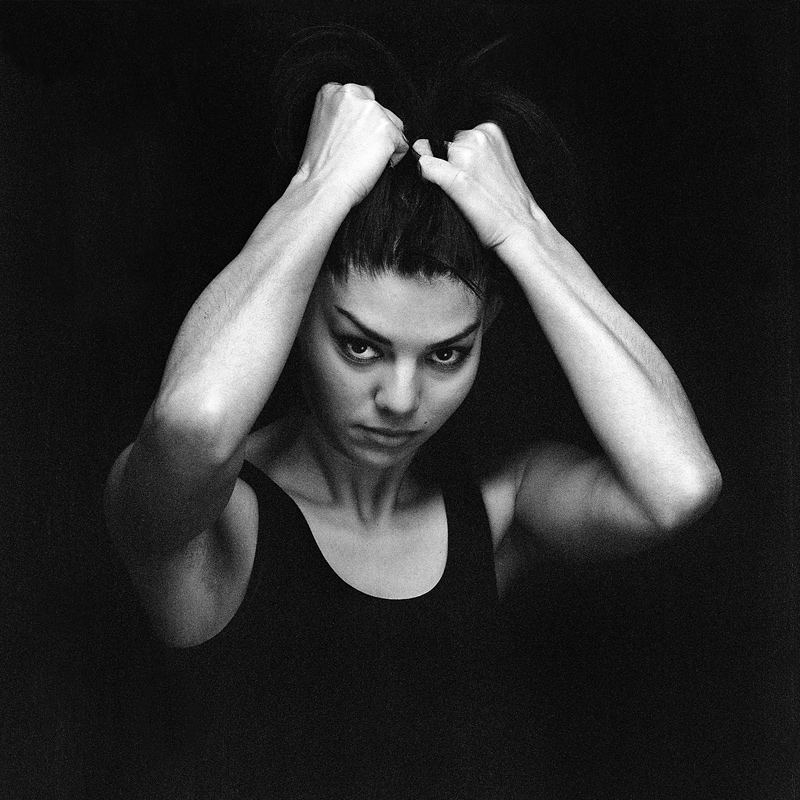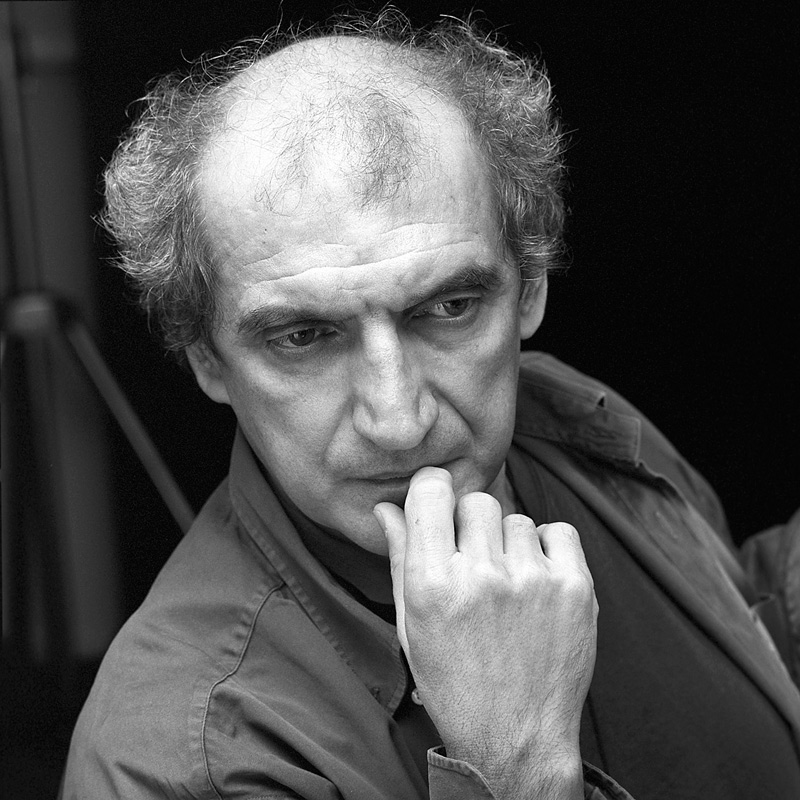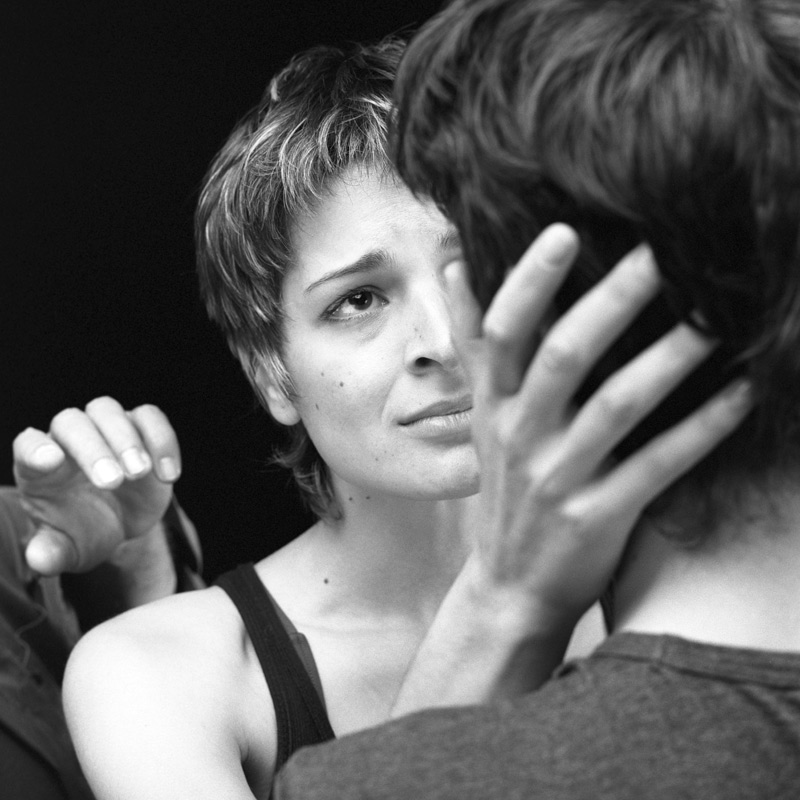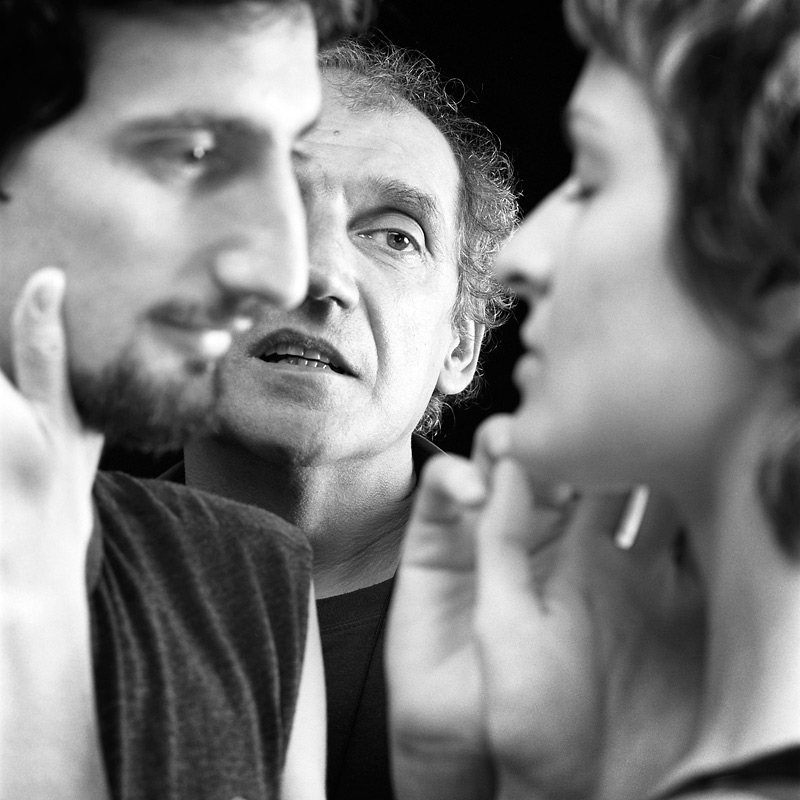Dell Arte
Photography
2009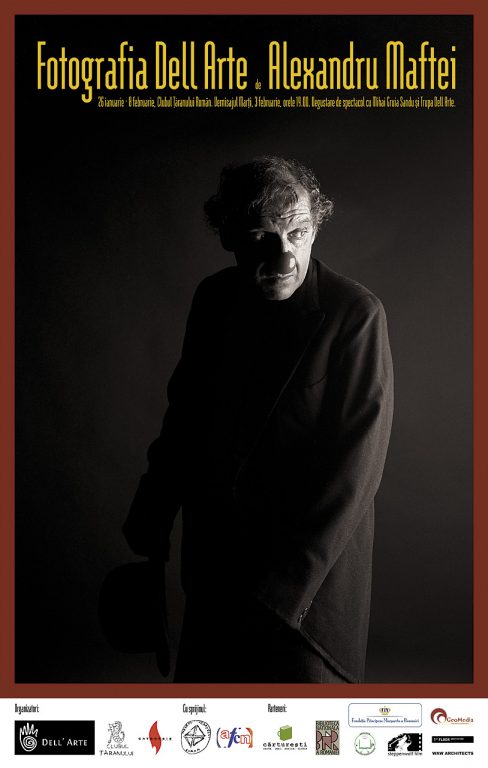

I like actors. I like the way they shine on the stage when playing or rehearsing, but also how they look backstage, tired and absent.
This project started back in 2005, when I asked Mihai Gruia Sandu, an actor friend of mine, to pose for me as a sad clown. He liked the idea and arrived at my studio with an old hat, a tailed coat, and a red nose. I wanted to locate the thin line separating the Character from the Actor, where the two start to blend. We talked for a long time, face to face, without touching the photo camera. He told me about Commedia dell’Arte, about the way lighting was handled in Italian theatre at a time when lightbulbs didn’t exist, and about the exquisitely complicated stage equipment discovered in one very old theatre. That conversation prepared the ground and provided the energy for the photography session that followed, which took only a few minutes. I call this a feature approach, in which you deliberately build up to what you want to photograph, as opposed to the documentary approach, where you shoot while you wait for something to happen.
Three years later, Gruia called me to do a photography project for Dell’Arte, his theatre company. We found ourselves in the peculiar position of shooting promotional material for a play that didn’t exist yet. At first, I used the same fiction-based approach as I had in the previous project. The actors came to gradually inhabit their characters in the non-existent play as they were improvising and interacting with the others. This process led to a series of living vignettes clipped from a show that was yet to be created. The grotesque masks worn by the actors deprived them of their primary means of communication: their eyes and faces. This meant we had to direct attention to their body language as a whole, approaching frames holistically rather than concentrating on detail.
As we were working, however, I was struck by the moments when the actors were taking off their masks in order to rest. The hilarious, expansive Commedia dell’Arte characters, brimming with energy only seconds earlier, were being replaced by humble, tired actors on a break. This led to the idea of shifting focus away from the invented characters and towards the actors’ inner state as they were pausing between scenes, their backs hurting, their stares floating in mid-air, their minds wandering. As fiction made way for reality, I put on my documentarist hat. The camera was now starting to click as soon as everyone stopped acting.
Eventually, I prompted the actors to own these magical moments and start playing themselves. This took us back into fiction, flowing freely right out of the intimate reality that was evolving under our very eyes.
The photographs were included in an exhibition hosted by the Romanian Peasant Club, the University Library and the UNESCO Theatre. The black-and-white shots were enlarged using the traditional method on photographic paper.

